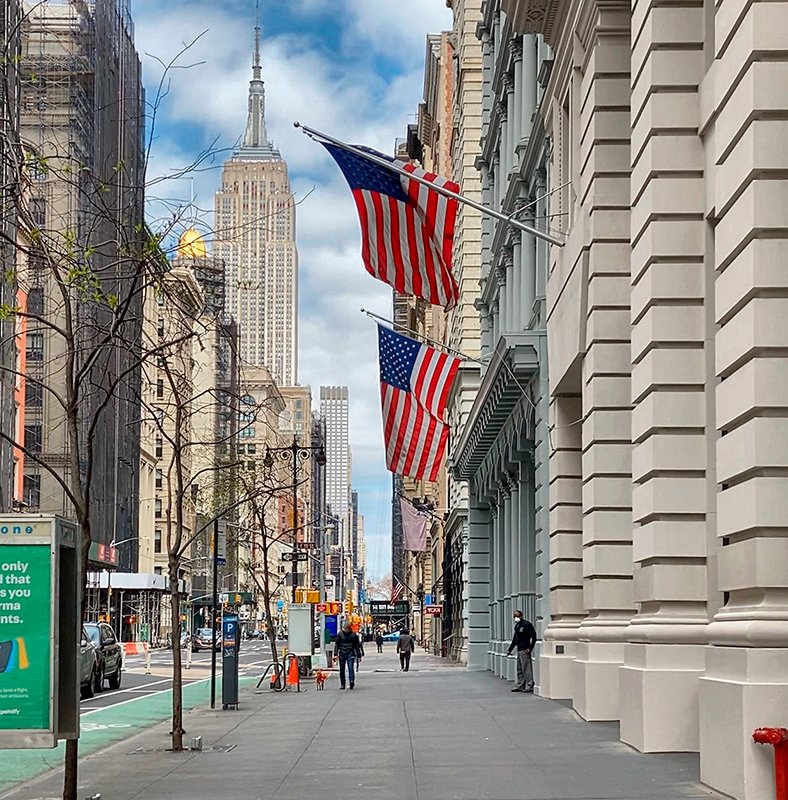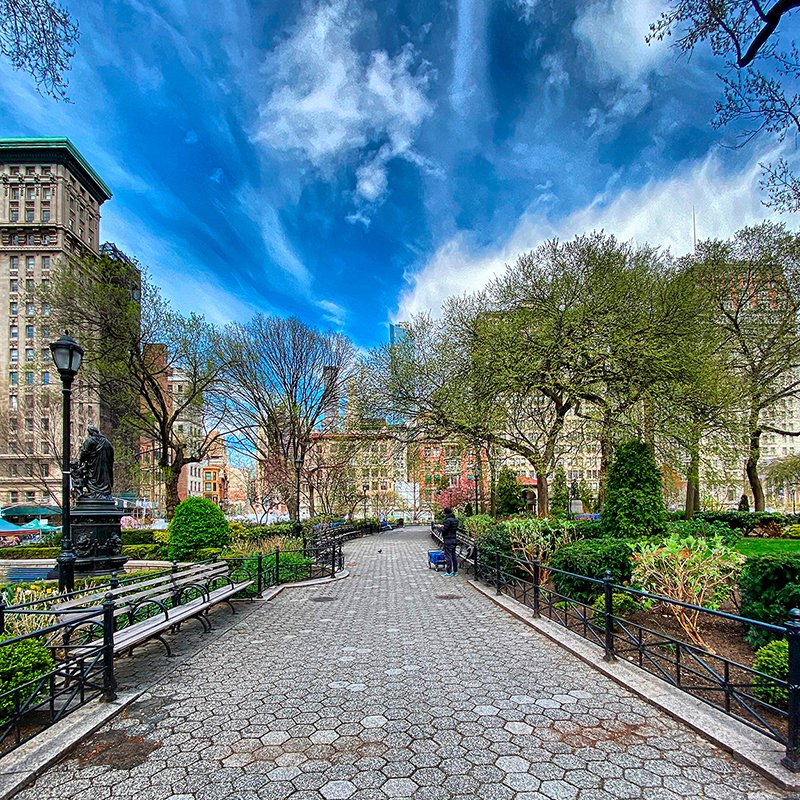Photography
Scenes From a Pandemic
“Scenes From a Pandemic” is an audiovisual multimedia project that explores the profound human and emotional landscape of the COVID-19 crisis. Working through personal impressions, it captures the stark reality and psychological weight of life in New York City from March 2020 through January 2021.
The work unfolds in two parts: the first spans March 20 to May 30, 2020—during the citywide lockdown—when the metropolis became eerily still. The second extends from May 30, 2020, marked by the surge of protests, to January 1, 2021, chronicling the collective tension and resilience that followed.
Drawing from lived experience and memory, Scenes From a Pandemic presents a curated selection of photographs accompanied by original soundtracks tailored to each image. This synthesis of sight and sound evokes the shifting emotions of those months—fear, solitude, and improbable beauty—through an 18-minute immersive composition. Viewers are transported into the silent city: its empty crosswalks, hushed avenues, and the charged uncertainty of a world where even a trip for groceries felt perilous.
Scenes From a Pandemic is an audiovisual multimedia project that explores the profound human and emotional landscape of the COVID-19 crisis. Working through personal impressions, it captures the stark reality and psychological weight of life in New York City from March 2020 through January 2021.
The work unfolds in two parts: the first spans from March 20 to May 30, 2020, during the citywide lockdown, when the metropolis became eerily still. The second extends from May 30, 2020, marked by the surge of protests, to January 1, 2021, chronicling the collective tension and resilience that followed.
Drawing from lived experience and memory, Scenes From a Pandemic presents a curated selection of photographs accompanied by original soundtracks tailored to each image. This synthesis of sight and sound evokes the shifting emotions of those months—fear, solitude, and improbable beauty—through an 18-minute immersive composition. Viewers are transported into the silent city: its empty crosswalks, hushed avenues, and the charged uncertainty of a world where even a trip for groceries felt perilous.
TURN ON YOUR SOUND
Sound is an equal part of the experience
Scenes from a Pandemic: Audio by Masashi Ohtsu, Stuart Argabright © 2023 Masashi Ohtsu all rights reserved
The Covid19 New York City lockdown is the first experience of its kind for many. The fear of an invisible disease, mass deaths, overburdened emergency rooms in hospitals, people in masks, and isolation from each other. The death tolls continue to rise in NYC and around the world. People are off the streets, and car and truck traffic is at a minimum. All non-essential businesses closed. The sound of NYC changes, a quieter city, a different ambiance. I hear sounds of birds outside my window, a sound I’m not used to hearing. The COVID skies look different too, even the air smells different.
Most businesses are closed so there is no job to go to. Walks become somewhat of a daily ritual, an escape. NYC feels cleaner with less litter and pollution. NYC streets are scattered with people who are out to get exercise or go to the grocery store or pharmacy. To shop, one must line up six feet apart outside to maintain store capacity limits. Entry is limited to a defined capacity of the store.
The days begin to meld together. Days into weeks, weeks into months. Uncertainty is the only certainty. The sirens from ambulances continue to cry through the streets. On occasion, you can hear a voice yell out in the empty streets. At 7 pm people begin clapping, cheering, and banging on pots out their windows to show support and give thanks to the medical community for their heroic efforts: A new daily ritual.
Construction sites were one of the first to resume where they left off. As the weather warms, the sound of the machines resonates once again. More people are in the parks. The homeless and people who used to seem on the margins are more visible than before.
Shaky leadership and misinformation continue to come from above.
*"...Starting March 16, New York City schools were closed. On March 20, the New York State governor's office issued an executive order closing "non-essential" business. The city's public transportation system remained open, but service was substantially reduced. By April, hundreds of thousands of New Yorkers were out of work, with lost tax revenues estimated to run into the billions of dollars. Low-income jobs in the retail, transportation, and restaurant sectors were especially affected. Over the course of the year, average residential and commercial rents both declined more than 10% in Manhattan, and vacancies surged. The first phase of reopening began in June 2020 with reduced occupancy ceilings. Schools reopened in September. The police department was ordered to enforce public health measures and conduct emergency inspections at private schools. Spikes in infection rates were observed in some neighborhoods, prompting tighter restrictions in ZIP codes that were identified as "cluster" areas. Public schools were closed again to in-person learning in November, as the seven-day rolling average positivity rate continued to rise over 3%. Indoor dining was suspended again on December 14. COVID-19 vaccinations began at nursing homes on December 21. Public health researchers estimated that 44% of all metro New York residents had been infected by December 31. Face masks in public areas were mandated throughout New York State by executive order on April 15, 2020. The ongoing pandemic is the deadliest disaster by death toll in the history of New York City.[5][6][7]
As of November 26, 2021, the city's confirmed COVID-19 deaths exceeded 29,000 and probable deaths exceeded 5,000.[4]
As of February 21, 2022, New York City has administered 16,854,715 COVID-19 vaccine doses.[8]..."
*https://en.wikipedia.org/wiki/COVID-19_pandemic_in_New_York_City
CDC Museum COVID-19 Timeline:
https://www.cdc.gov/museum/timeline/covid19.html
© 2025 Masashi Ohtsu all rights reserved



































